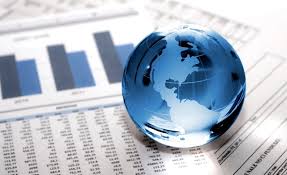Investing.com - After a historic week in which U.S. politics dominated market sentiment, investors will get back to the business of watching the Federal Reserve and economic data in the days ahead as expectations mount for a December rate hike.
Elsewhere, Germany is to publish preliminary data on third quarter economic growth on Tuesday for further hints on the strength of the euro zone's economy.
Preliminary data on Japanese third quarter growth will also be in focus, amid concerns over recent yen strength and its implication on economic growth prospects.
Meanwhile, in the U.K., market participants will be looking ahead to reports on consumer prices, employment and retail sales for further indications on the continued effect that the Brexit decision is having on the economy.
Ahead of the coming week, Investing.com has compiled a list of the five biggest events on the economic calendar that are most likely to affect the markets.
1. Fed Chair Yellen Appears Before Congress
Federal Reserve Chair Janet Yellen is due to testify on the economic outlook before the U.S. Congress Joint Economic Committee on Thursday at 10:00AM ET (15:00GMT).
Her comments will be monitored closely for any new insight on policy. The Fed left interest rates unchanged earlier this month, in a widely expected decision, but signaled it could hike in December as the economy gathers momentum and inflation picks up.
In addition to Yellen, traders will also pay close attention to comments from a handful of Fed officials also scheduled to speak throughout the week to see if they endorse the idea of a December rate hike.
Dallas Fed President Rob Kaplan, Richmond Fed President Jeffrey Lacker and San Francisco Fed President John Williams speak Monday.
Boston Fed President Eric Rosengren and Fed Vice Chair Stanley Fischer are on deck Tuesday.
Minneapolis Fed President Neel Kashkari, St. Louis Fed President James Bullard and Philadelphia Fed President Patrick Harker speak Wednesday.
On Friday, New York Fed President William Dudley, St. Louis Fed President James Bullard, Kansas City Fed President Esther George and Dallas Fed President Rob Kaplan are on tap.
Odds for a rate hike at the Fed's December 13-14 meeting currently stand at 81.1%, according to Investing.com's Fed Rate Monitor Tool.
2. U.S. October Retail Sales & Inflation
The Commerce Department will publish data on October retail sales at 8:30AM ET (13:30GMT) Tuesday. The consensus forecast is that the report will show retail sales rose 0.5% last month, after gaining 0.6% in September. Core sales are forecast to inch up 0.4%, after rising 0.5% a month earlier.
Rising retail sales over time correlate with stronger economic growth, while weaker sales signal a declining economy. Consumer spending accounts for as much as 70% of U.S. economic growth.
On Thursday, the Commerce Department will release October inflation figures at 8:30AM ET (13:30GMT). Market analysts expect consumer prices to ease up 0.4%, while core inflation is forecast to increase 0.2%.
On a yearly base, core CPI is projected to climb 2.2%. Core prices are viewed by the Fed as a better gauge of longer-term inflationary pressure because they exclude the volatile food and energy categories. The central bank usually tries to aim for 2% core inflation or less.
Rising inflation would be a catalyst to push the Fed toward raising interest rates.
Besides the retail sales and inflation reports, this week's calendar also features U.S. data on initial jobless claims, building permits, housing starts, producer prices, industrial production, as well as surveys on manufacturing conditions in the Philadelphia and New York regions.
3. German, Euro Zone Q3 GDP
Germany will publish a preliminary report on third quarter economic growth at 07:00GMT (2:00AM ET) on Tuesday. The euro zone's largest economy is forecast to expand 0.3% in the July-September period, slowing from growth of 0.4% in the preceding quarter.
The euro zone will release revised third quarter growth data shortly afterwards at 10:00GMT (05:00AM ET). An initial estimate published late last month showed that the region's economy grew 0.3% in the three months ended September 30, unchanged from the second quarter.
4. Japan Third Quarter GDP
Japan will publish preliminary third quarter economic growth data at 23:50GMT (6:50PM ET) on Sunday. The report is expected to reveal that Japan's economy expanded by just 0.2% in the three months to September, maintaining pressure on policymakers to support the world's third largest economy.
5. U.K. CPI, Employment & Retail Sales for October
The U.K. Office for National Statistics will release data on consumer price inflation for October at 09:30GMT (4:30AM ET) on Tuesday. Analysts expect consumer prices to rise 1.1%, after increasing 1.0% a month earlier.
At 09:30GMT (4:30AM ET) Wednesday, the ONS will publish the monthly jobs report. The claimant count change is expected to rise by 2,000 in October, with the jobless rate holding steady at 4.9%. Wage growth including bonuses is forecast to rise 2.4%.
On Thursday, the ONS will produce a report on October retail sales at 09:30GMT (4:30AM ET), with analysts expecting an increase of 0.5%, following a flat reading in the preceding month.
The Bank of England held interest rates at a record-low 0.25% earlier this month, as was widely expected, but hinted it could raise rates in the coming months if inflation accelerates too quickly.



















































